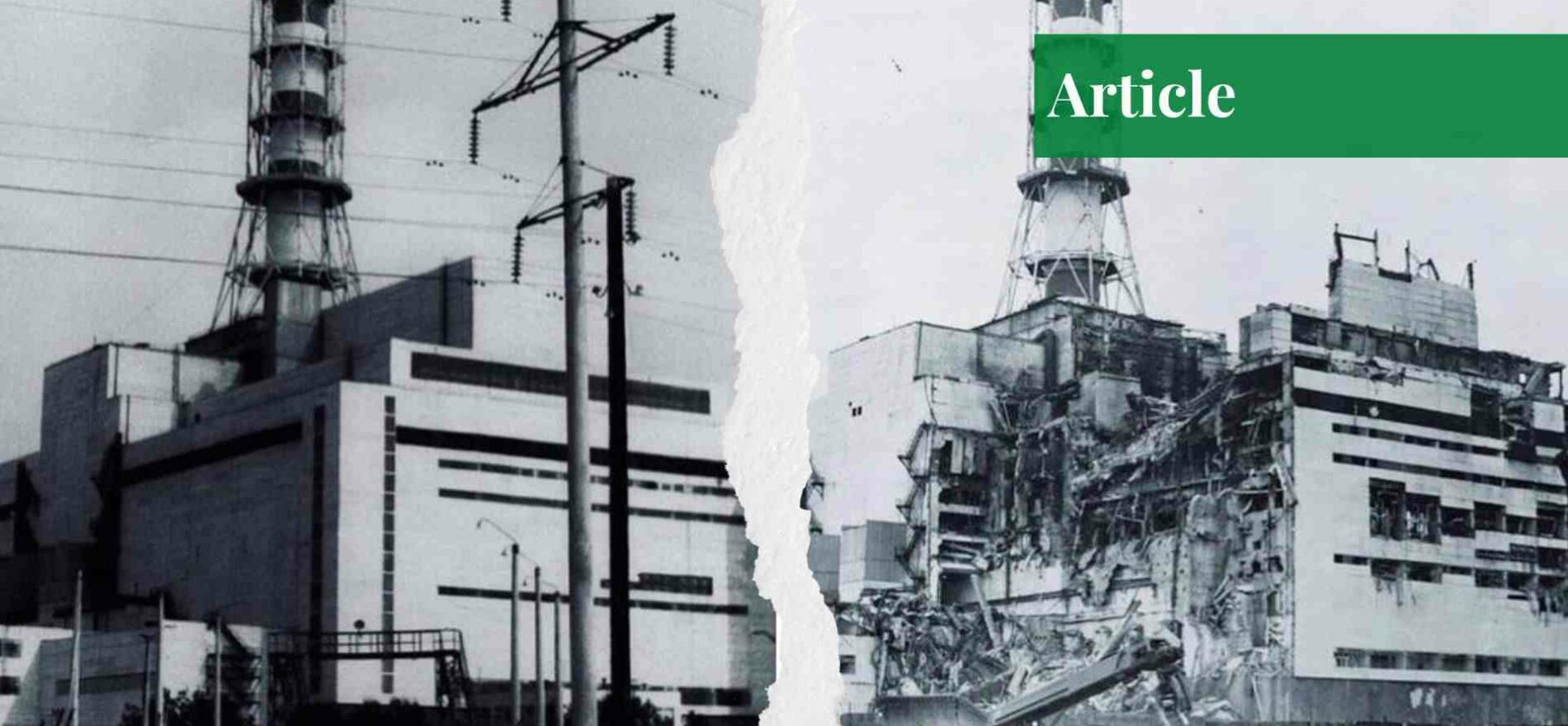Ms Summaiyya Qureshi completed her bachelor's degree in International Relations from the Lahore College for Women University, Lahore. Her areas of interest include geopolitics, foreign policy analysis, and nuclearization.
Introduction
After witnessing the United States’ nuclear attack on Hiroshima and Nagasaki in 1945, the world turned its attention toward nuclear power and started investing in it. Lenin was the first Soviet Union leader who started a nuclear power station north of Chernobyl, a city in Ukraine, in 1977.
Almost 115000 to 135000 people were residing within a 30 km radius of the plant at the time of the accident. Four nuclear reactors of RMBK-1000 design were working at the site while two more reactors were under construction at the time of the accident. The Chernobyl nuclear disaster happened on 26th April 1986 due to the explosion of reactor no 4.
How Did the Incident Happen?
According to the World Nuclear Association, it was the consequence of significant blunders committed by the site operator combined with the Soviet Union’s flawed designed reactor. The detonated reactor unit was built in 1983, along with unit 3; the reactor’s first two units were built between 1970 and 1977.
At the time of the incident, the workers were performing a test on Chernobyl reactor four to see the working of the RBMK reactor under limited power flow and to analyze the loss of power. They had already failed to perform this test before. Workers turned down the reactor to 25% of its capacity, but when the capacity was dropped to 1%, and then when they tried to increase the power, the reactor got out of control.
An emergency shutdown of the reactor failed which then caused pressure, and under this pressure, water pumps failed, so there was zero water flow and therefore, the reactor exploded. According to an engineer witness. “The 1.5 ton blocks atop the fuel channel of the upper biological shield begin jumping up and down and you could feel the shock waves through the building structure.”
Burning fuel and cold water ejected a mass of steam that could not leave, causing pressure to raise and resulting in radioactive leakage. Air started getting into the reactor, which caused the fire. The second explosion happened when hydrogen from hot water steam contacted zirconium. It was a much bigger explosion than the previous one.
The environment was filled with radiation, and while firefighters tried to end the fire, they were unaware of the danger due to radiation leakage. For days, helicopters dumped kilograms of clay, sand, and boron to extinguish the fire and prevent radioactive spread. For ten days, a radioactive material dominated the air and fell as dust in the vicinity, while smaller particles were distributed by air in adjacent places.
If we look at the specifications of the RBMK-1000 reactor, we discover that it ran on uranium dioxide fuel enriched with the uranium-235 isotope. When a neutron hit the isotope, it created Xenon 135, which caused the catastrophe. Furthermore, the reactor employed graphite blocks to impede the travel of neutrons, causing them to collide with uranium 235, causing it to fission and produce the energy required to heat or boil water in the reactor.
The entire purpose of utilizing uranium 235 was to transform water into steam which aids in the operation of the turbine, generating energy. Controlling the number of striking neutrons is a common means of slowing or speeding up the reactor. To control the number of neutrons, Xenon 135 or boron carbide control rods are used. Reactors have a negative void coefficient, which is designed to have negative feedback.
Even if the water in the reactor drops, using the void coefficient, it never gets out of control, but that was not the case with the RBMK-1000 reactor used in Chernobyl. The controller rods in RBMK-1000 reactors were removed because of the supervisor and deputy chief engineer Anatoly Dyatlov’s orders, which are violations of reactor protocols.
Consequences of the Chernobyl Nuclear Disaster
Two workers died on the scene, and 28 perished during the first two weeks following the Chernobyl nuclear disaster. Other sections of the Soviet Union were also exposed to low levels of radionuclides (iodine 131, cesium 134, and cesium 137), putting them at risk of cancer. The acute radiation syndrome (ARS) ratio got higher in the area. Throughout 1986, the total number of thyroid cancer cases documented among individuals under the age of 18 surpassed 20000.
If you want to submit your articles and/or research papers, please check the Submissions page.
The views and opinions expressed in this article/paper are the author’s own and do not necessarily reflect the editorial position of Paradigm Shift.















